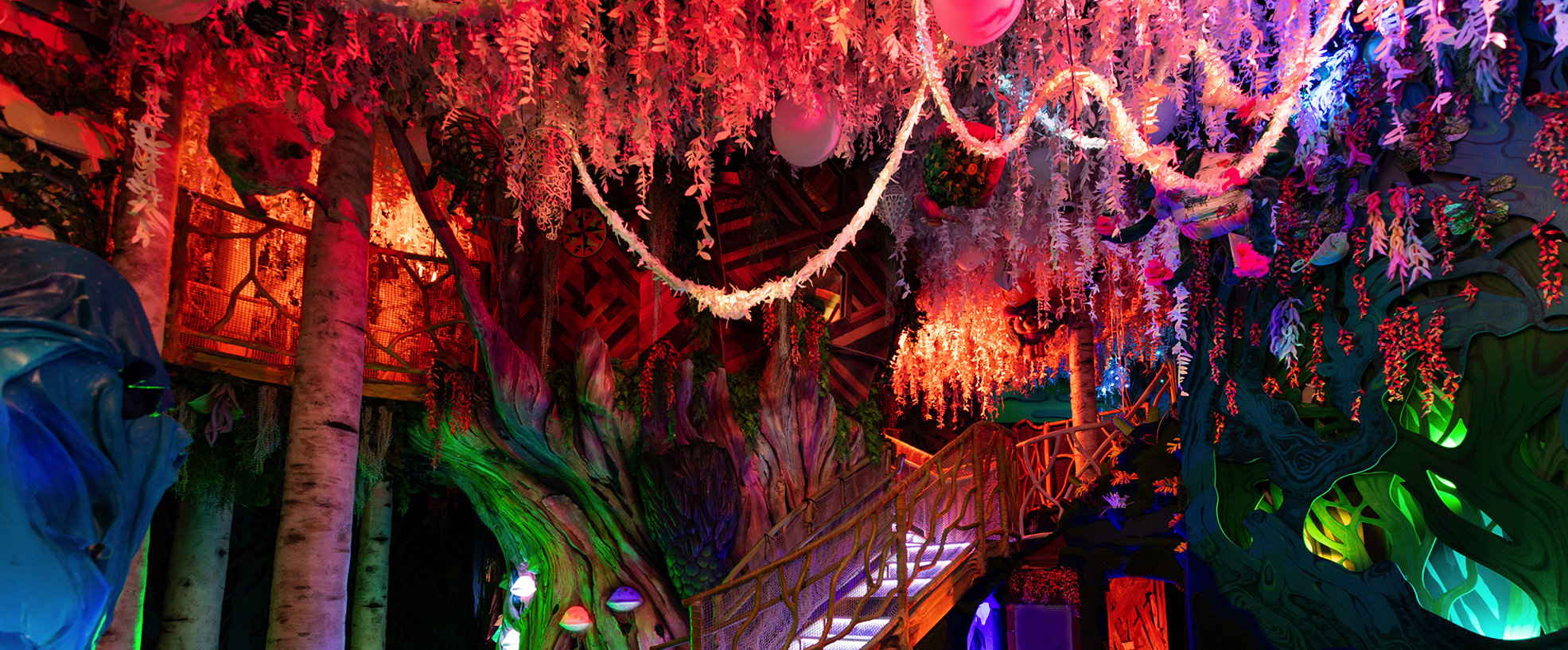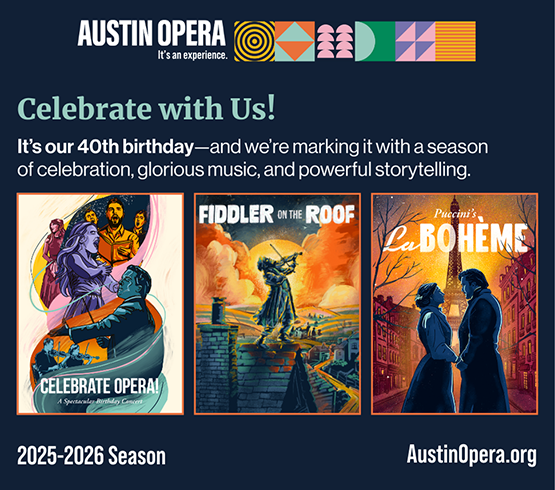The first time I visited strange new art worlds via a space/time refrigerator portal I had to travel to a renovated bowling alley in New Mexico to do so. But now Texas has its own multi-art-dimensional kitchen appliances for all our art exploration needs as the immersive art experience company, Meow Wolf, sets down in Grapevine with a second venue in Houston’s Fifth Ward announced for 2024.
To connect together the many murals, sculptures, light installations, video and sound art from over a hundred contemporary artists, the company weaved an overarching narrative, both intimate family saga and sci-fi epic. Visitors can then decide to simply wander the place like some alternate reality museum or embrace the embedded mystery, engaging with the art as detectives.
After the million visitors success of the Santa Fe project, Meow Wolf opened a Las Vegas and Denver site/experience, each one with its own unique themes and stories. With all these projects, they’ve asked area artists to collaborate and contribute.
“We do years of research specific to the local region,” Heron said, describing Meow Wolf’s foundational work when beginning a new project. They came into Texas with a prepared shortlist of Texas artists they wanted to collaborate with. Some, like Austin artist Diego Mireles Duran, they had worked with before.
Heron says that by The Real Unreal’s opening, that shortlist had grown into 40 Texas artists contributors, including 28 visual artists, nine sound artists and three video game designers. While most of the artists are North Texas-based, Austin, El Paso and Houston got some representation.
“These are the artists that are independent, with a working studio practice in Texas, that we invited to collaborate with us,” says Heron, adding, “We did want it to feel representative of the whole state and not just North Texas.”
Each project has its own original story that ties the art together, though inter-dimensional universe hopping via cold storage appliances is something of a recurrent motif. The company remains mostly mum about the storyline and Texas artists who they will bring in for the Houston project. They have announced that Houston muralist Mario Enrique Figueroa Jr., a.k.a. GONZO247 will be the artist liaison.
With The Real Unreal now open, we know its narrative ties closer to the original Santa Fe House than the Vegas or Denver projects, though instead of a bowling alley they’ve taken over a shuttered Bed, Bath and Beyond.

1 ⁄10
Meow Wolf Grapevine, Photo by Imani Thomas | Photo Courtesy of Meow Wolf.

2 ⁄10
Tsz Kam’s Metamorphoses in Meow Wolf Grapevine, Photo by Kate Russell | Photo Courtesy of Meow Wolf.
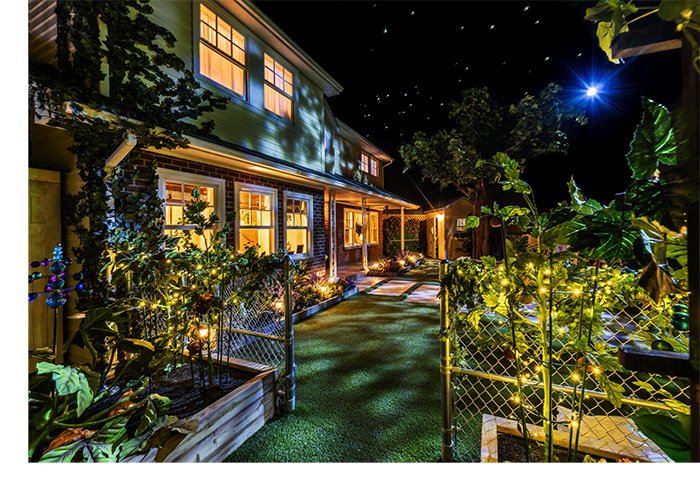
3 ⁄10
Exhibition Detail of Meow Wolf Grapevine’s The Real Unreal, Photo by Jess Gallo | Photo Courtesy of Meow Wolf.
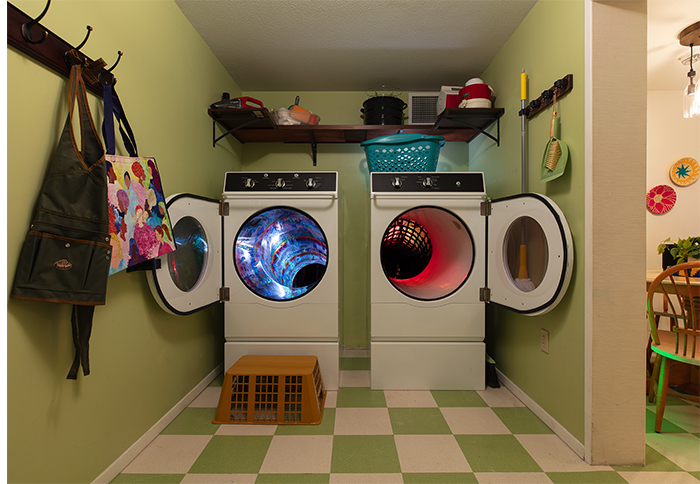
4 ⁄10
Exhibition Detail of Meow Wolf Grapevine’s The Real Unreal, Photo by Kate Russell | Photo Courtesy of Meow Wolf
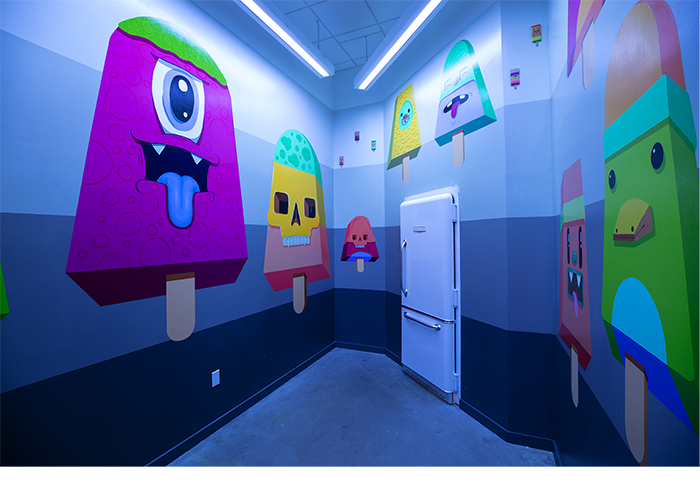
5 ⁄10
Carlos Donjuan, Las Paletas, Meow Wolf Grapevine’s The Real Unreal, Photo by Kate Russell | Courtesy of Meow Wolf

6 ⁄10
Loc Huynh, My First Studio, Meow Wolf Grapevine’s The Real Unreal, Photo by Atlas Studio | Courtesy of Meow Wolf
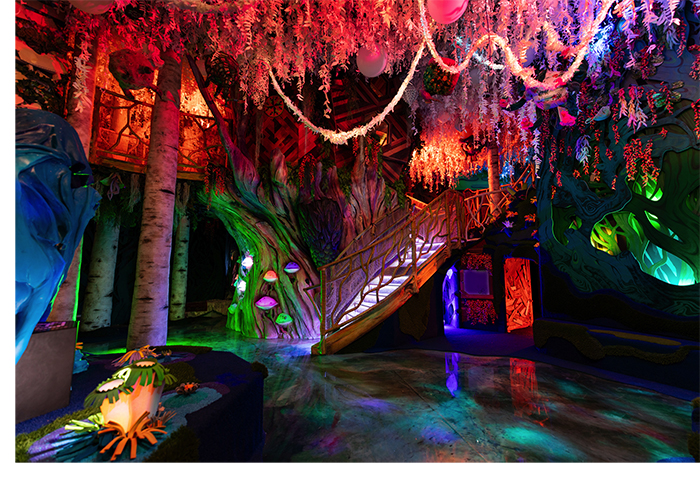
7 ⁄10
Exhibition Detail of Meow Wolf Grapevine’s The Real Unreal, Photo by Kate Russell | Photo Courtesy of Meow Wolf.
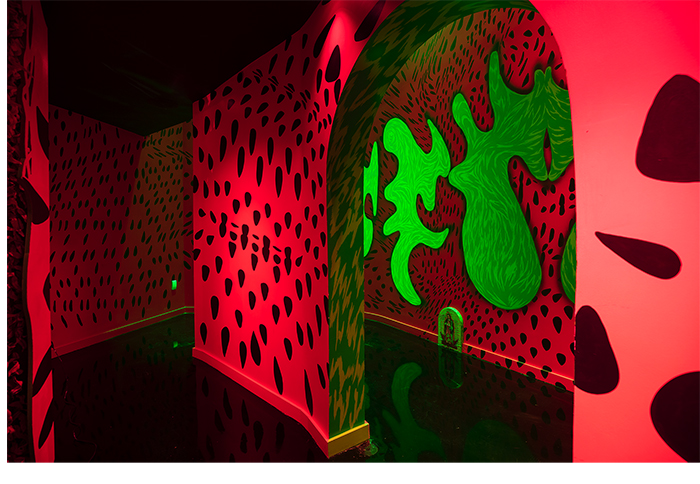
8 ⁄10
Diego Mireles Duran, Nepantla, Meow Wolf Grapevine’s The Real Unreal, Photo by Kate Russell | Courtesy of Meow Wolf

9 ⁄10
SM Sanz, Celestial Guardians, Meow Wolf Grapevine’s The Real Unreal, Photo by Jess Gallo of Atlas Media | Courtesy of Meow Wolf
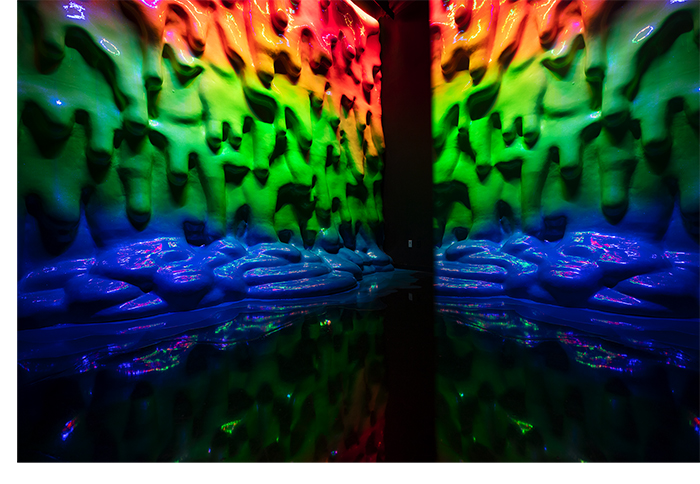
10 ⁄10
Dan Lam, Macrodose, Meow Wolf Grapevine’s The Real Unreal, Photo by Kate Russell |Courtesy of Meow Wolf
The Unreal story also involves a house, missing family members and travels to bizarre and beautiful alien worlds and alternate art realities, but the individual family members and relationships along with the mysteries to solve are different from House.
With that overarching narrative in mind, Meow Wolf artists built the main themed-zones that have names like Neon Kingdom, Optic Drift and Glowquarium. Then the Texas artists were given a general synopsis of that story, a specific space within the individual zones, technical support and told to create.
“Our Texas collaborators are given a lot of freedom to do what they want to do for their own body of work and points of view,” describes Heron, adding, “We don’t want to place censorship or a lot of boundaries.”
The more I talked with Heron, the more I realized how much curating is involved in creating The Real Unreal experience. That curation is needed so the Texas artists can follow their own vision, while making certain that artwork aesthetically fits into a specific zone and the greater narrative. The creative directors need to get to know the Texas artists’ previous work and decide where and how that work might fit best within the Unreal.
“We already know which rooms are available for Texas artists, what they look like, if it’s a mural focused room, a sculpture room, a sound focused room.”
“She often works with these other-worldly plant shapes, so it would be a good transition between the internal [Santa Fe] artist working on the Forest and this Texas artist working in these jungle terrains that would flow very well between these two rooms.”
Muralist Diego Mireles Duran, whose work includes watermelon imagery, was also given space within the plant-themed Forest section. Dan Lam, who often works with UV light and uses glowing colors, was chosen to create a sculpture installation for the blacklight lit Glowquarium zone. Carlos Donjuan, who often uses images of paletas (Mexican ice-pops) in murals was, of course, given space in the Brrrmuda area, which holds those multiverse refrigerator portals.
Heron says working within the project’s collaborative and immersive framework also gave some artists incentives to stretch their usual boundaries.
“Artists got the chance to push themselves with maybe something they hadn’t done before.”
Perhaps the largest piece that crystallizes that collaboration between Meow Wolf core artists and the Texas artists is In Woven Light, the giant mural of threaded rainbows and black and white characters stretched along the outside of the building. Heron was one of the team of six that collaborated on the mural, likely the first artwork visitors will see as they approach The Real Unreal. It stands as both a physical and metaphorical testament to Meow Wolf’s creative mission.
“We’re now weaving together Santa Fe arts and North Texas, Dallas arts into one magical, beautiful thing, this big, collaborative mural.”
—TARRA GAINES

